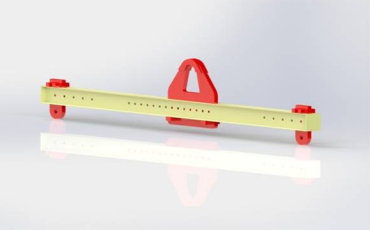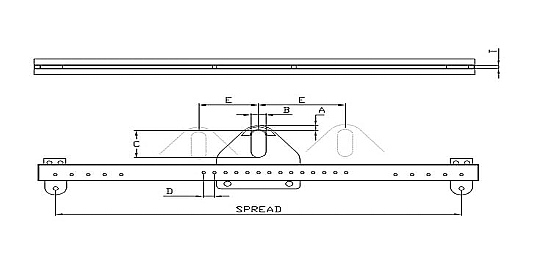Adusjtable Lifting Beam

A lifting beam has a simple design consisting of a beam with a single attachment point centered on the top side of the beam for connecting to a crane, hoist, or other lifting machine. Some lifting beams may have two bails in order to engage two crane or hoist hooks. There are typically two or more evenly-spaced lifting lugs on the underside of the beam that attach to and support the load via hook or sling.
Lifting beams are ideal for lighter and shorter span lifts that don’t require a lot of headroom. Because there is a single bail attachment on the top for the crane to attach to, it doesn’t require the same amount of headroom that a spreader beam does.
Lifting beams also provide multiple lifting points underneath and can be designed with variable or fixed lifting lugs. This type of adjustability means that lifting beams can be used in many different applications and for many different types of loads. This adjustable design allows lifting beams to:
- Handle out-of-balance loads.
- Control inward crushing forces.
The rigid and heavy-duty design of a lifting beam is ideal for loads that are too weak or flexible to be lifted without support—such as long or thin sheets of metal or steel plates.
Adjust lifting bail to be positioned over the load center gravity before lifting the load.
Product Features :
- This style of lifting beam can lift off center loads easily by adjusting the bail prior to the lift.
- This lifter can be used where headroom is limited, & comes with multiple spreads that are adjustable to accommodate various load sizes.
- Supplied with two lower shackles.
- Tested and certificates supplied at No Additional Charge.
Options :
- Additional lift points.
- Additional lengths.
- Higher capacities.





